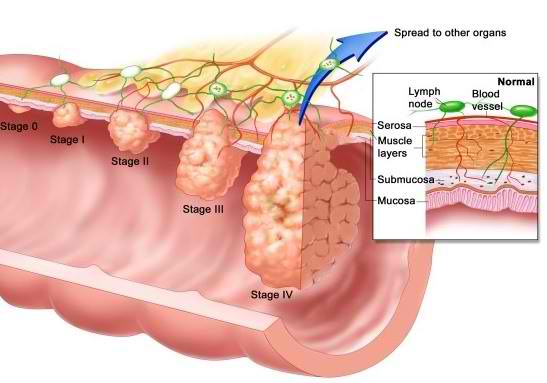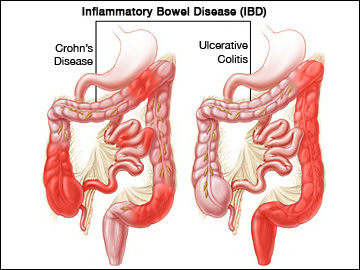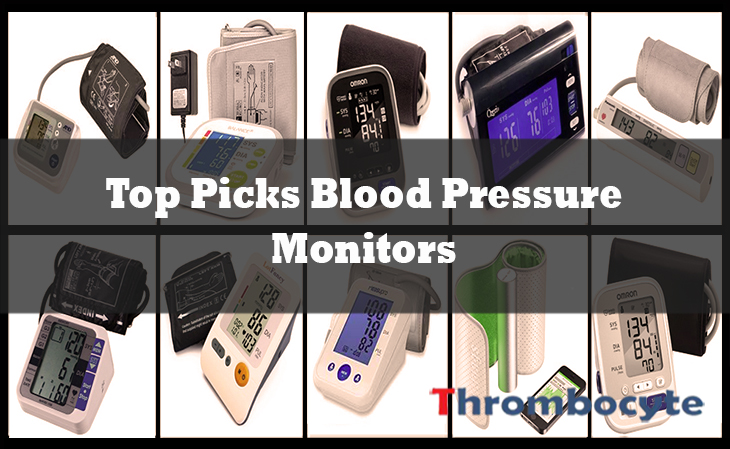Blood in Stool : The Ultimate Guide
Plus Treatment Methods You Can Learn Today To Get Rid of Blood in Stool Medically and/or Naturally
Urgent or Emergency?If you think you have concerns that needs immediate medical attention, give your doctor a visit. Not sure what counts as urgent or emergency?
Blood in stool (often described as pooping blood) happens for a number of reasons. The occurrence may either indicate a serious medical condition or nothing of concern at all.
There are several causes that can result to blood in stool or pooping blood. It can be due to medical condition, diet or genetics.
The amount of blood will vary from person to person which is usually influenced by the core causative factor involved. In extreme cases, some people experience large amounts of blood in stool which suggests the need for immediate medical consultation.
Hematochezia, the medical term for fresh blood in stool, is a common occurrence where up to 15% of adults within the last six months already have noticed presence of blood on toilet paper after passing stools.
Studies have shown that most individuals become aware of the bleeding only upon seeing spots on toilet paper or toilet bowl after a bowel movement.
It’s a common initial fear for an individual to wonder, “Why is there blood in my stool? Do I have cancer? Am I going to die?” There are different factors that can lead to the presence of blood in the stool; where in fact, eating beets make it look like you have bloody stools but not.
However, despite the vast amount of causes, blood in stool can be treated- medically and/or naturally.
There are a lot of things you can do to end your bleeding misery. Read how to stop blood in stool.
In this article we show you not just one, but 10 of the most common causes of blood in stool and possible ways to get rid of it.
A symbol are the visible signs of the invisible.
Causes of Blood in Stool (Pooping Blood)
What causes blood in stool
Before we proceed, we need to have a clear understanding on what does blood in stool mean? Blood in stool is a hint that bleeding is present in the digestive tract. The bleeding is usually described either as dark in color or bright red blood on toilet tissue or stool. But in some occasions, the presence of blood can only be determined by a procedure known as fecal occult blood test.
The causes of bloody stool can also be determined using several other diagnostic methods. It is usually started with a check on medical history and performance of physical examination.
Laboratory diagnostic procedures may include colonoscopy, nasogastric lavage, enteroscopy, radionuclide scanning, barium x-ray, laparotomy, angiography, and esophagogastroduodenoscopy (EGD).
You should take a look at the DANGER signs of internal bleeding.
What causes black stool? The location of the underlying digestive tract bleeding influences the color of blood in stool. Dark, tarry stools (medically called melena) indicate that the site of bleeding is at the higher or upper part of the digestive tract. People often pertain to the experience as black stools or black poop.
A bright red color indicates that it’s been recently added to the stool (fresh blood in stool), suggesting that it came from a location that is close to the anal area or usually around the anus. Bright blood in stool means that bleeding is in the lower intestinal tract, such as the large intestine or rectum. It is usually described as red stool. Below are blood in stool causes that are most common.
1. Foods To Avoid for Anal Fissure.

Avoid Foods Including:
Enriched flour (eg. enriched cereals, pasta, breads); fatty meats (eg. bacon, sausage, organ meats); dairy products (eg. cow’s milk); and added sugars (eg. regular softdrinks, jellies, milk chocolate, ice cream, candies).
It is described as a small cut or tear in the tissue lining of the anus that results to injury in the area thereby the presence of blood in your stool. It can easily occur in people who have a tight sphincter tone, resulting to the inability of the muscle to relax as appropriate.
This can be a painful occurrence which is usually followed by a burning sensation considering that the skin in the area is sensitive. It is usually caused by passing large and hardened stool.
The tissue damage usually heals in a few days. Since the damage is around the anal area, the bleeding is described as bright red blood in stool.
Anal fissure is common during forceful bowel movements or constipation. But it can also occur secondary to sexually transmitted infections affecting the anus, the state of pregnancy, and the presence of inflammatory bowel disease.
Chronic constipation can be dangerous. In fact, it has been associated to increasing your risk of having a heart attack. It pays to be readily knowledgeable on the following best natural laxatives for constipation relief. See how to get rid of anal fissure.
How Well Do You Know Your Bowel Health?
Get A Clue On What’s Really Behind Your Stool.

2. Foods To Avoid for Piles (Hemorrhoids).

Avoid Foods Including:
Fatty foods (eg. deep fried french fries, corn dogs, fritters); strong spices (eg. curries, hot peppers); low fiber carbs (eg. baked goods, white bread, white rice, white pasta); and liquid vices (eg. coffee, alcoholic drinks).
It refers to the swelling of blood vessels in the anus or rectum which can be painful and itchy. Piles appear as clumps or masses of tissue in the anal canal.
With hemorrhoids, mild bleeding may occur when passing stools which has commonly worried the person, thinking to have developed a very serious underlying condition, “I have blood in my stool. This is a sign of cancer, right?.”
Any person may experience hemorrhoids but it is more common in pregnant women and individuals between ages 45 and 65. Only 1 out of 10 individuals with piles needs surgery.
Besides bright red blood in stool, other symptoms include soreness, redness, swelling and itchiness around the anus.
Most people may only have to seek for basic treatment options like increased water intake, changes in diet, and use of hemorrhoid creams. Learn about home remedies for hemorrhoids. See how to get rid of piles.

3. Foods To Avoid for Anal Fistula.

Avoid Foods Including:
Spicy foods; alcohol; caffeinated drinks; tea; chocolates.
An anal fistula is one of many possible reasons for blood in stool. It is a small channel that forms between the skin near the anus and the anal canal.
It often causes pain and bleeding when passing stools.
In some cases, anal fistula causes persistent drainage. Surgery is the only cure for the medical condition.
Other symptoms include irritation around the anus, swelling, redness, tenderness, discharge of pus, fever and constipation. See how to get rid of anal fistula.

4. Foods To Avoid for Gastroenteritis.

Avoid Foods Including:
Caffeine and alcohol; milk and dark chocolate; spicy foods; dairy products (eg. cheese, ice cream, milk, yogurt).
It is a bacterial or viral infection of the stomach and bowel which can result to diarrhea with mucous and blood contents (described by patients as bloody diarrhea).
Other symptoms include stomach cramps, moderately high temperature, headaches, and vomiting.
Episodes of loose watery stools are passed for about 3-4 times in a day.
Many cases of gastroenteritis does not necessitate medical consultation because the symptoms usually disappear in a few days. See how to get rid of gastroenteritis.
5. Foods To Avoid for Peptic Ulcers.

Avoid Foods Including:
Acidic foods (citrus and tomatoes); spicy foods (eg. hot peppers, chilies, hot sauce); caffeine and alcohol; carbonated beverages; chocolate.
It is the presence of open sores in the lining of the duodenum (upper portion of small intestines) or the stomach.
Peptic ulcer is often a bacterial infection caused by Helicobacter pylori.
There are certain medication that can also cause peptic ulcers like ibuprofen and aspirin.
Symptoms include burning pain, heart burn, nausea, bloating, dark blood in stool, vomiting, and weight loss. See how to get rid of peptic ulcer.
How Do You Know If You Have Stomach Ulcer?
There are Signs You Can Easily Identify.

6. Foods To Avoid for Diverticular disease.

Avoid Foods Including:
Nuts and seeds (eg. popcorn, sesame seeds, corn, raisins); whole wheat grains and whole-grain cereals; and gassy vegetables (cabbage, squash, beans, cauliflower, kale, broccoli).
The diverticula are small pouches that bulges from the wall of the colon. It is a common condition and increases with age.
Diverticula doesn’t likely result to any concerns but may possibly become infected or bleed due to weakened blood vessels.
The presence of blood in poop can be sudden which appears red or maroon in color.
Most people who have diverticular disease does not display any evident symptom.
However, the most common symptoms include changes in normal bowel habits (diarrhea or constipation), lower abdominal pain, bloating, or blood in stool. See how to get rid of diverticula.
7. Foods To Avoid for Bowel cancer (rectal or colon) or polyps.

Avoid Foods Including:
High fat foods; red meat; dairy products; high sodium foods (eg. frozen dinners, condiments, cannes soups, crackers); processed cheese and meats (eg. ham, bacon, hot dogs, sausage, luncheon meat); alcohol and tobacco.
Rectal bleeding is the early symptom of bowel cancer. Bowel cancer or colorectal cancer is a condition that affects the colon and the rectum. It’s also considered as one possible cause of blood and mucus in stool.
About 1/3 of colorectal cancers happen in the the rectum where 2/3 occur in the colon.
When the medical condition is identified at an early stage, in about 90% of the cases, the treatment will be successful.
On the other hand, polyps are small benign formations on the inner lining of the colon or rectum that likely bleeds.
Common symptoms include blood in stool (pooping blood), a change in bowel habit that lasts for more than 3 weeks, a lump in the stomach area, tiredness, weight loss, and abdominal pain. However, many of these symptoms can be due to a different cause.
It’s best to observe for any of these unusual changes and seek for medical consultation. See how to get rid of bowel cancer.


8. Foods To Avoid for Angiodysplasia (Abnormal blood vessels).

Avoid Foods Including:
Alcohol; spicy foods; citrus foods; caffeinated foods (coffee, soda, energy drinks, chocolate, tea).
Angiodysplasia is the presence of fragile, abnormal blood vessels in the gastrointestinal tract which likely leads to bleeding.
It is a condition common in older people due to aging and degeneration of blood vessels.
The most affected area is the right side of the colon.
Symptoms may include fatigue, weakness, and shortness of breath due to anemia.
Individuals with angiodysplasia may display bright red blood in stool that comes from the rectum. No pain is associated with the condition – a blood in stool no pain situation. See how to get rid of angiodysplasia.
9. Foods To Avoid for Inflammatory Bowel Disease (Crohn’s disease or ulcerative colitis).

Avoid Foods Including:
Carbonated beverages; caffeinated foods and drinks (eg. chocolate, coffee); spicy foods, alcohol; nuts and seeds (popcorn, strawberries, raspberries, sesame seeds); dairy products; raw fruits and vegetables; greasy and fatty foods.
Long-term conditions characterized by inflammation of the bowel lining and has been associated with mucus and blood in stool.
The higher portion of the digestive tract, starting from the gut, is the site of problem when it concerns Crohn’s disease (the inflammation causes deep ulcers and scarring). The large bowel and the rectum further down the tract is the site of impairment for ulcerative colitis.
The most affected area for Crohn’s disease is the colon and the small intestine. Symptoms include chronic diarrhea (often contains blood, mucus and/or pus), abdominal pain, fever, weight loss, rectal bleeding, and feeling of fullness in the abdomen.
On the other hand, ulcerative colitis (also known as inflammatory bowel disease) is characterized by the formation of tiny ulcers and small abscesses in the colon and rectum which usually occur periodically and associated with the display of bloody mucus in stool. Symptoms may include abdominal pain, rectal pain, fever, weight loss, malnutrition, and blood in diarrhea. The bloody poop will appear darker red in color. See how to get rid of inflammatory bowel diseases.

10. Foods To Avoid for Esophageal problems.

Avoid Foods Including:
Caffeinated beverages (eg. coffee, tea); carbonated beverages; acidic foods (orange juice, tomato juice and sauces, pineapple juice, grapefruit juice); alcoholic beverages; chocolate; gum-containing mints (eg. spearmint, peppermint); fried foods and cream soups.
The esophagus is a tube connecting the throat to the stomach. The onset of bleeding is caused by tears or varices in the esophagus.
Any type of liver disease can cause the development of esophageal varices.
The bleeding will result to dark streaks in the stools. Heavy bleeding can result to light-headedness, vomiting, and paleness. See how to get rid of esophageal problems.
| So Important To Know! |
| What are causes of blood in stool? |
| How to prevent rectal bleeding (blood in stool)? |
| How is history check and physical examination performed? |
| What to do if have rectal bleeding (blood in stool)? |
| When to call a doctor? |
| What are available treatment options for blood in stool? |
Source:
National Center for Biotechnology Information (Hematemesis, Melena, and Hematochezia), MedicineNet (Stool Color, Changes in Color, Texture, and Form), WebMD (Blood in Stool (Hematochezia): Causes, Diagnosis, Treatment), MedlinePlus (Black or tarry stools), ePainAssist (Hematochezia or Blood in Stool: Causes, Symptoms, Treatment, Diagnosis, Prevention), Mayo Clinic (Mucus in stool: A concern?)
Journal Reference:
- Garnett Cheney. Rapid Healing of Peptic Ulcers in Patients Receiving Fresh Cabbage Juice. California Medicine, 1949 Jan; https://www.ncbi.nlm.nih.gov/pmc/articles/PMC1643665/
- Aldoori WH, Giovannucci EL, Rimm EB, Wing AL, Willett WC. Use of acetaminophen and nonsteroidal anti-inflammatory drugs: a prospective study and the risk of symptomatic diverticular disease in men. Arch Fam Med, 1998 May-Jun; https://www.ncbi.nlm.nih.gov/pubmed/9596460/
- Aldoori WH, Giovannucci EL, Rimm EB, Wing AL, Trichopoulos DV, Willett WC. A prospective study of diet and the risk of symptomatic diverticular disease in men. Am J Clin Nutr., 1994 Nov; https://www.ncbi.nlm.nih.gov/pubmed/7942584/
- Langmead L, Dawson C, Hawkins C, Banna N, Loo S, Rampton DS. Antioxidant effects of herbal therapies used by patients with inflammatory bowel disease: an in vitro study. Aliment Pharmacol Ther., 2002 Feb; https://www.ncbi.nlm.nih.gov/pubmed/11860402/
- Hanai H, Iida T, Takeuchi K, Watanabe F, Maruyama Y, Andoh A, Tsujikawa T, Fujiyama Y, Mitsuyama K, Sata M, Yamada M, Iwaoka Y, Kanke K, Hiraishi H, Hirayama K, Arai H, Yoshii S, Uchijima M, Nagata T, Koide Y. Curcumin maintenance therapy for ulcerative colitis: randomized, multicenter, double-blind, placebo-controlled trial. Clin Gastroenterol Hepatol., 2006 Dec; https://www.ncbi.nlm.nih.gov/pubmed/17101300
PS: Hit LIKE to spread awareness that blood in stool does not necessarily or immediately indicate that a person has cancer.
- READ MORE





